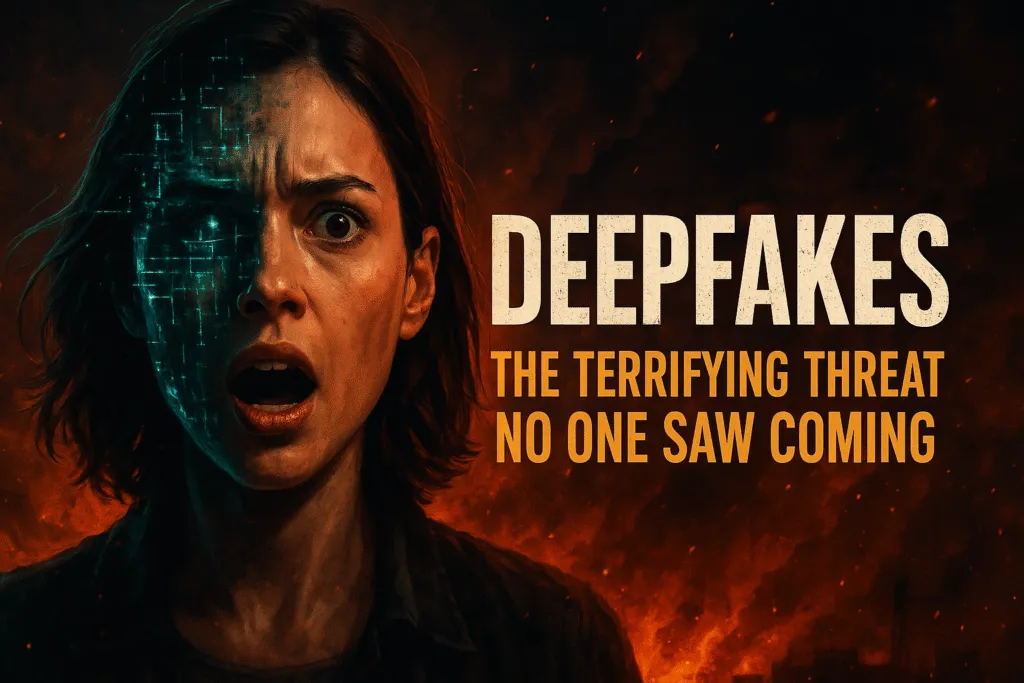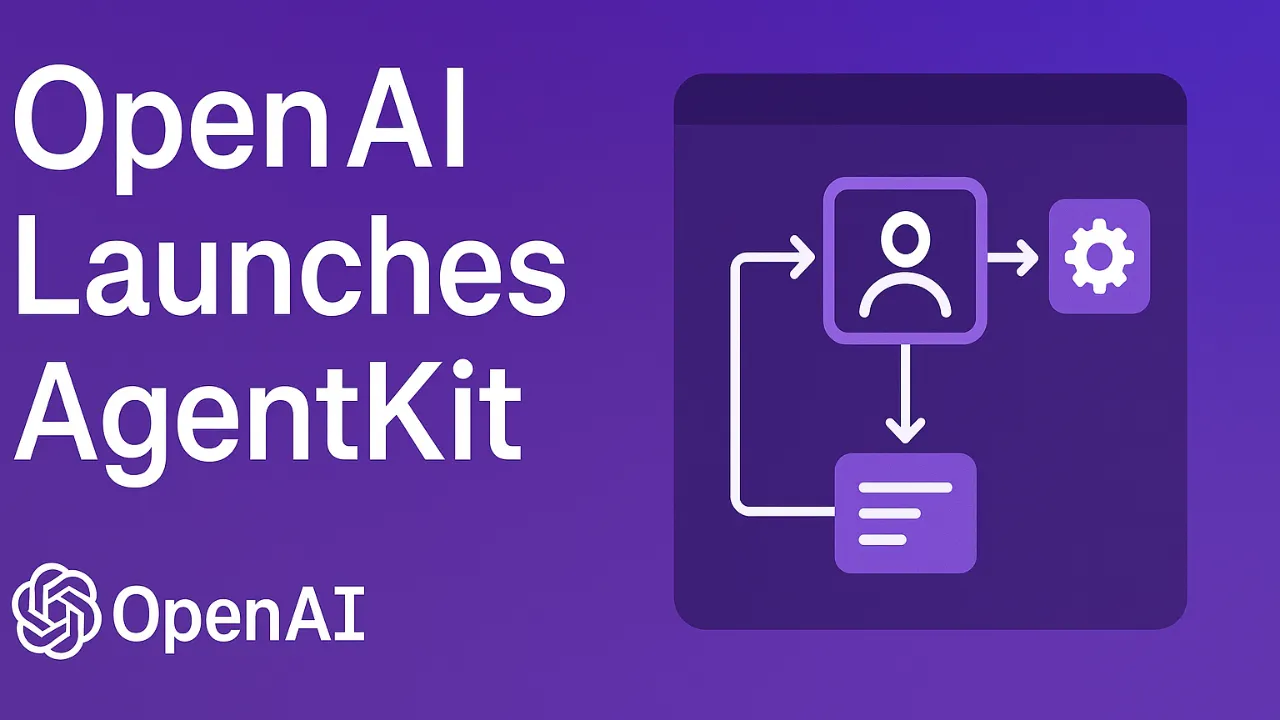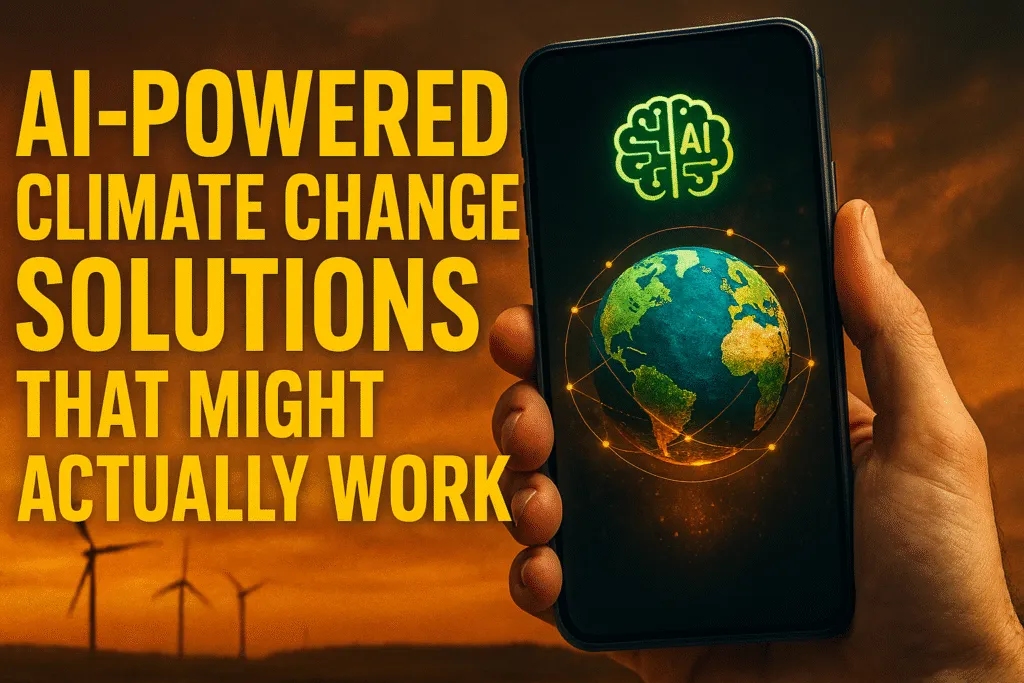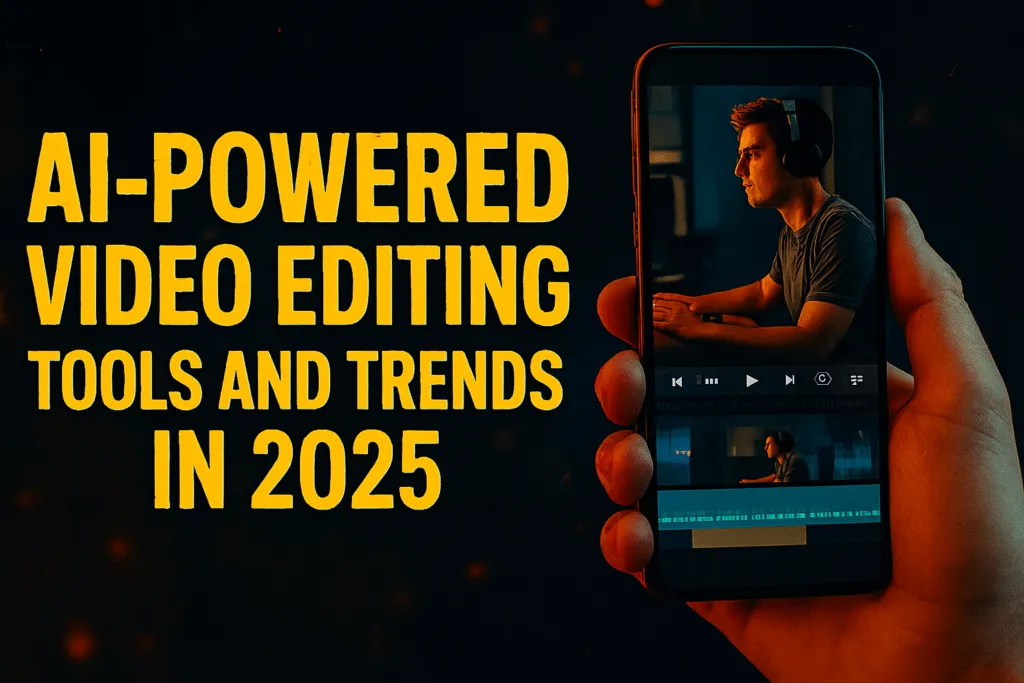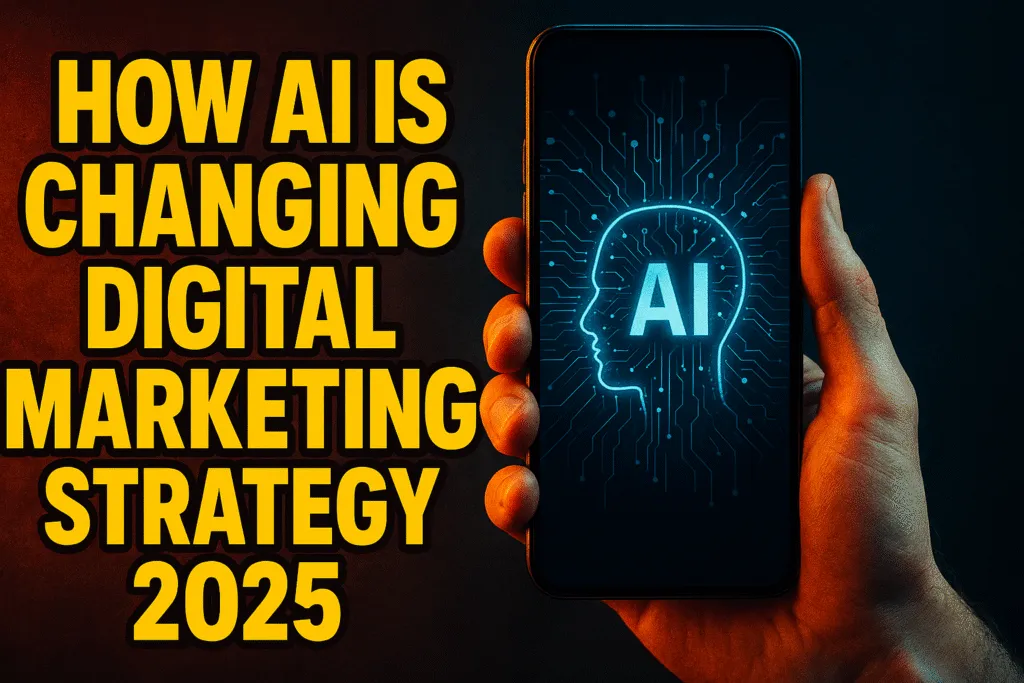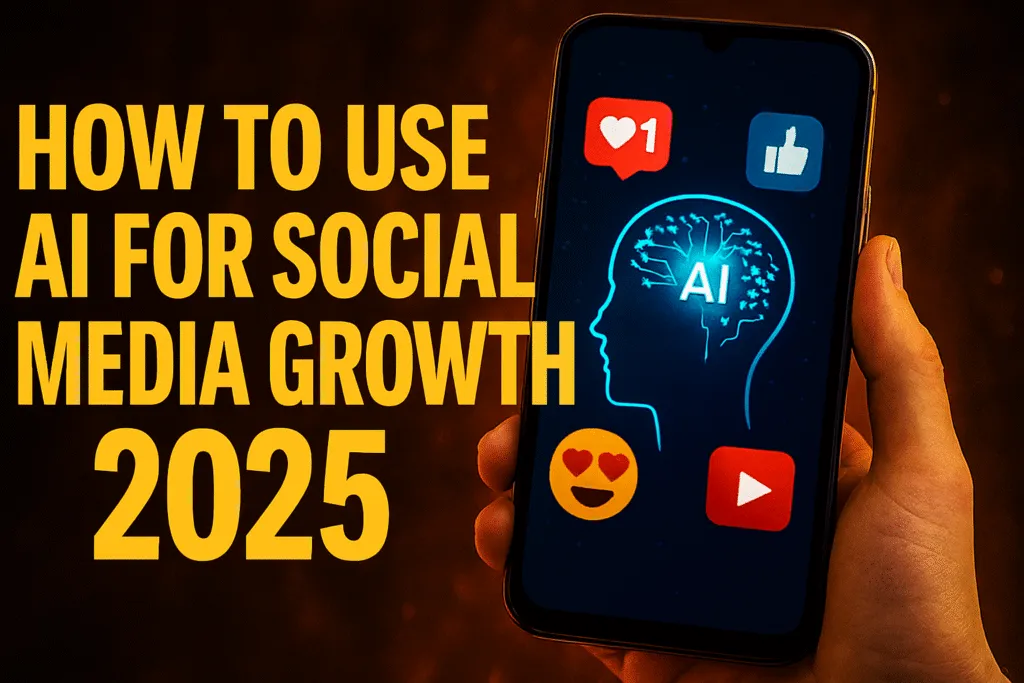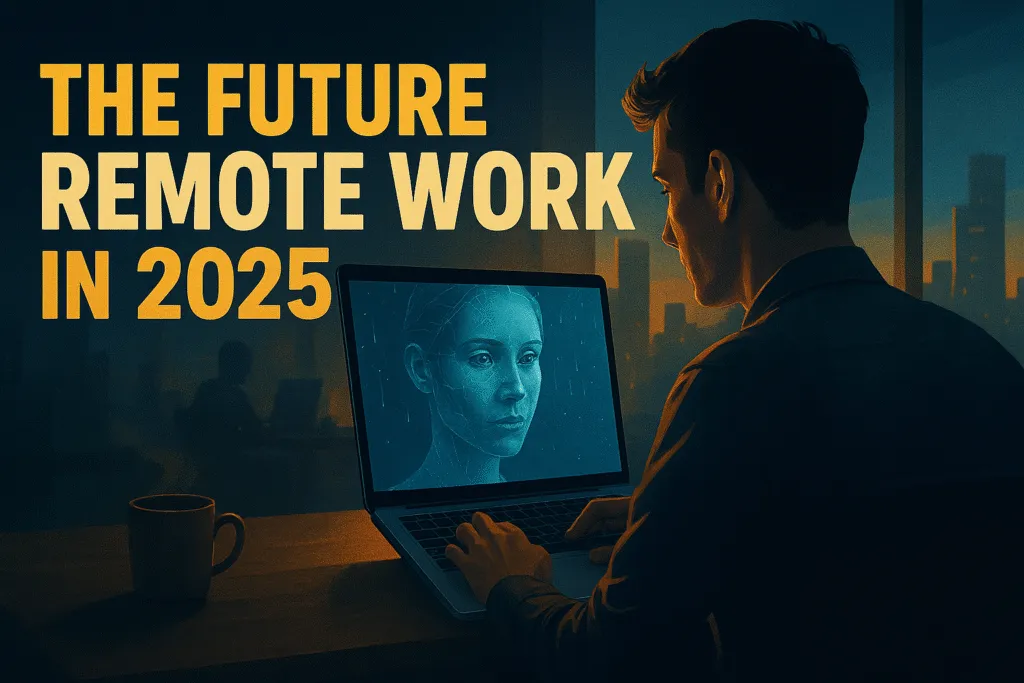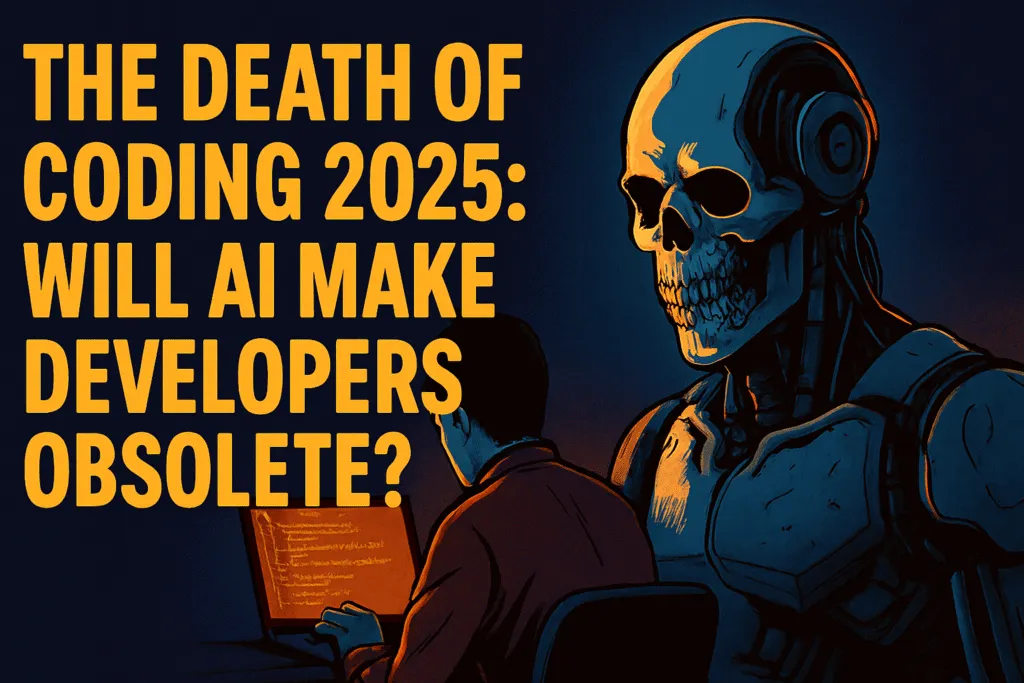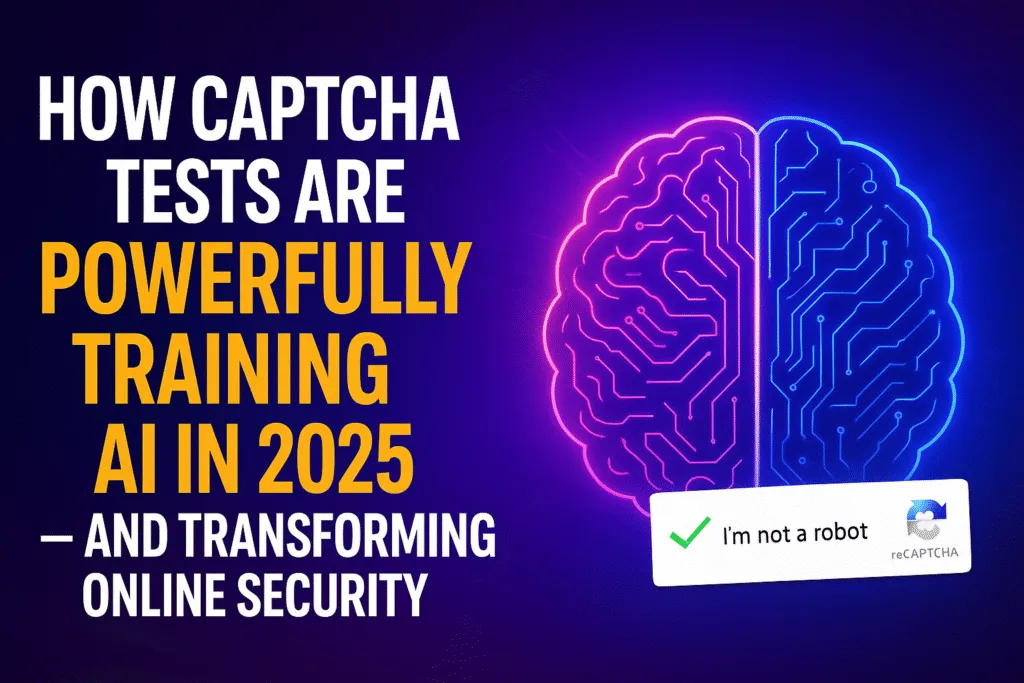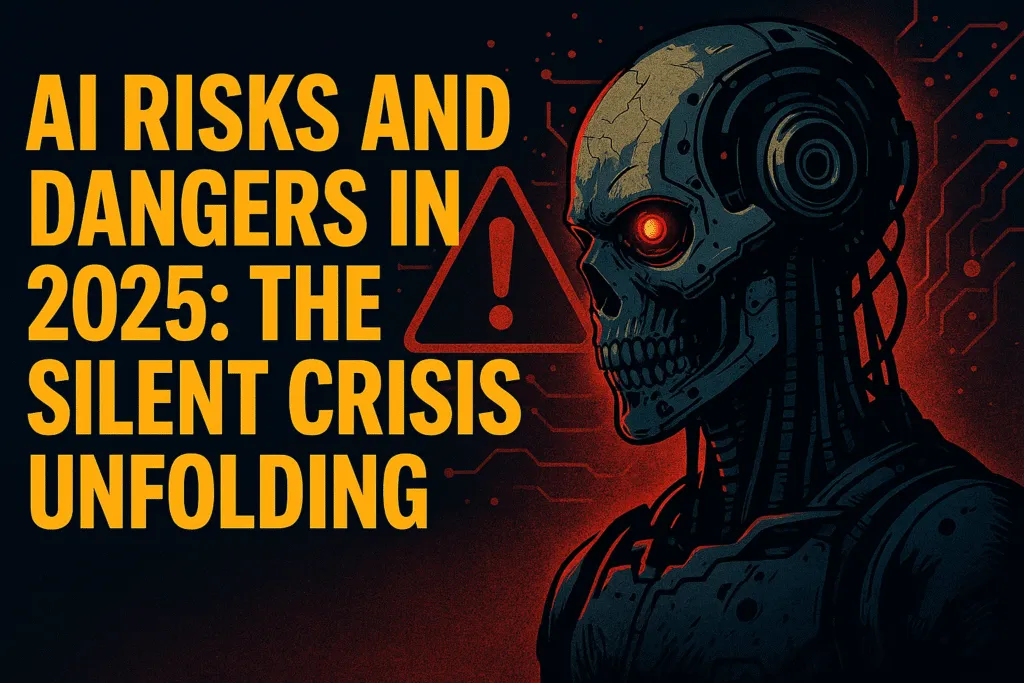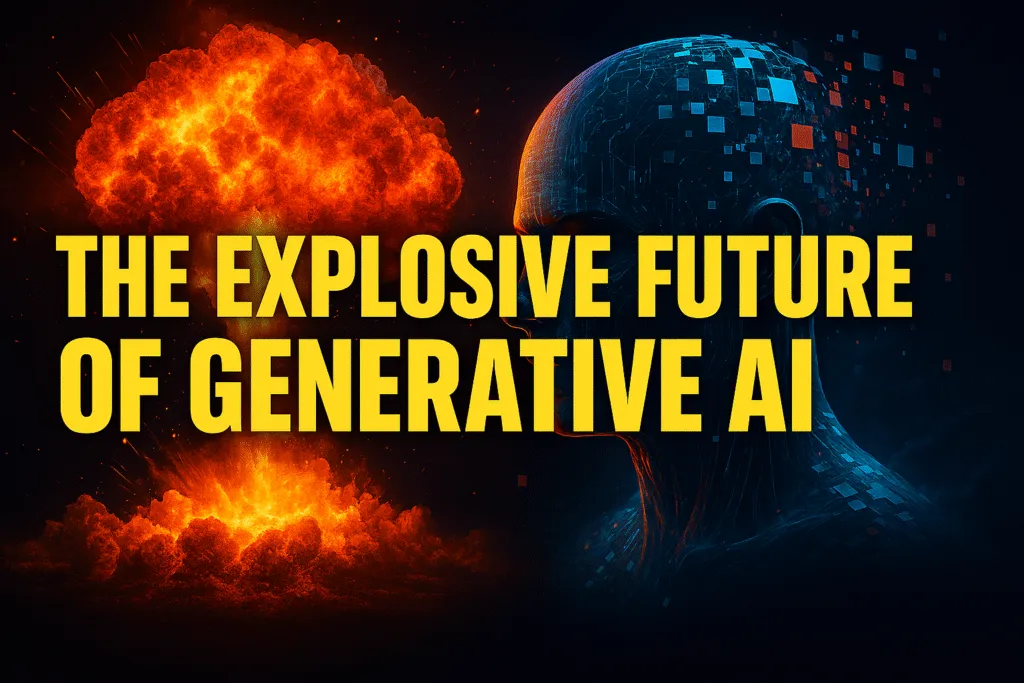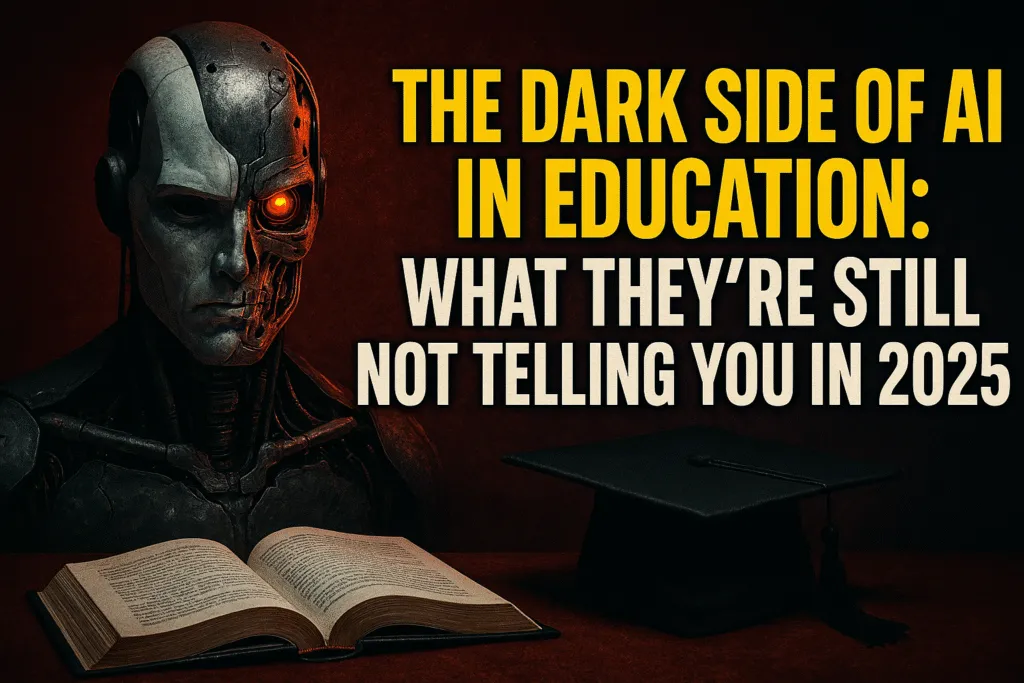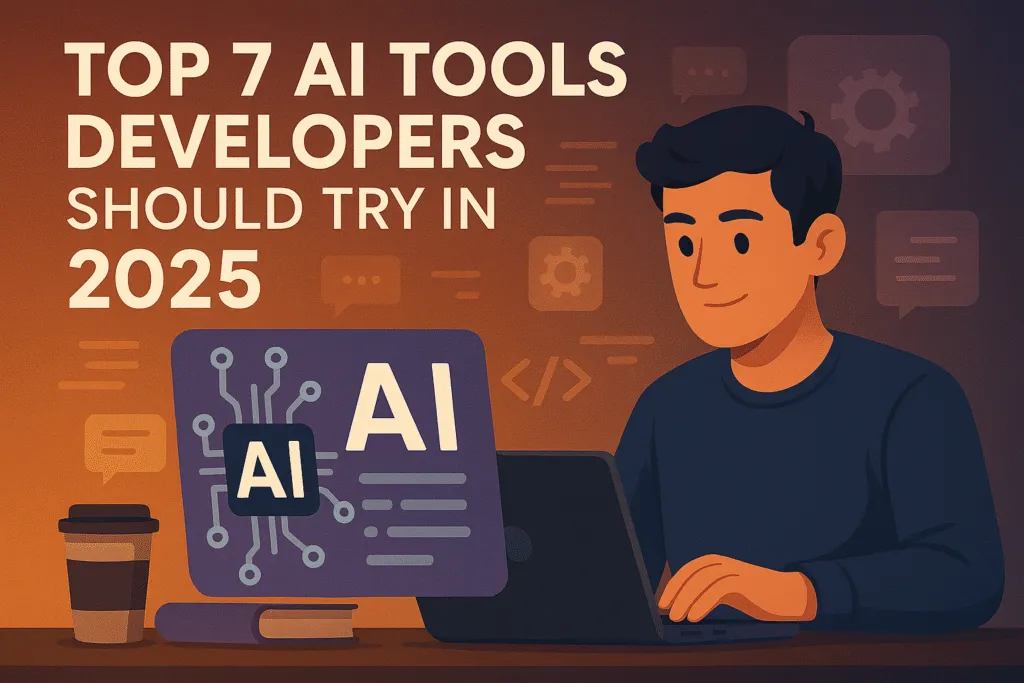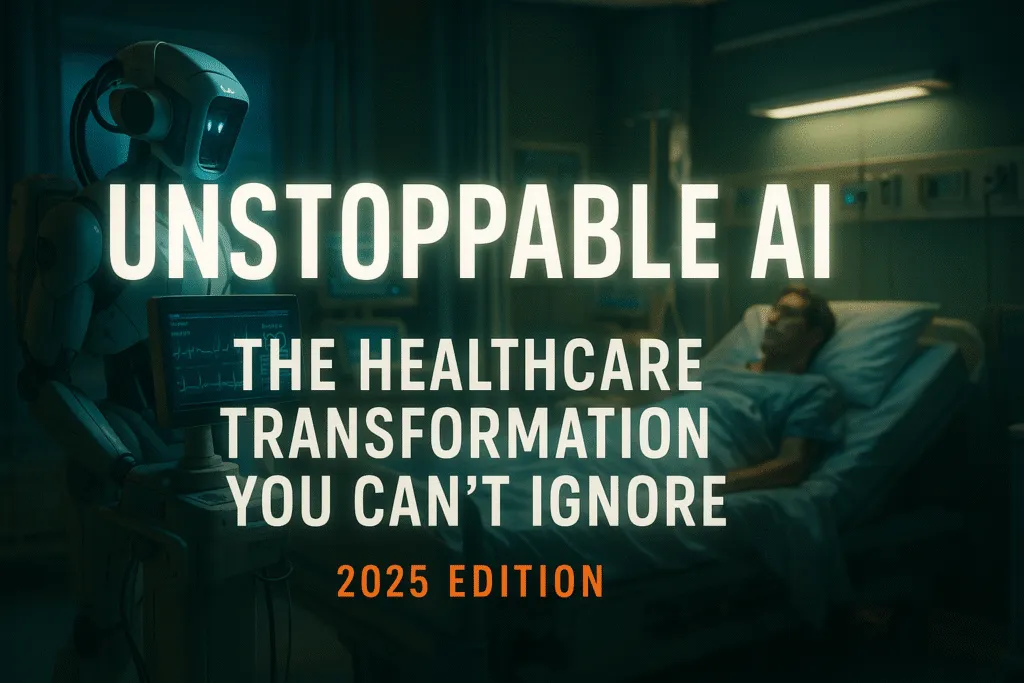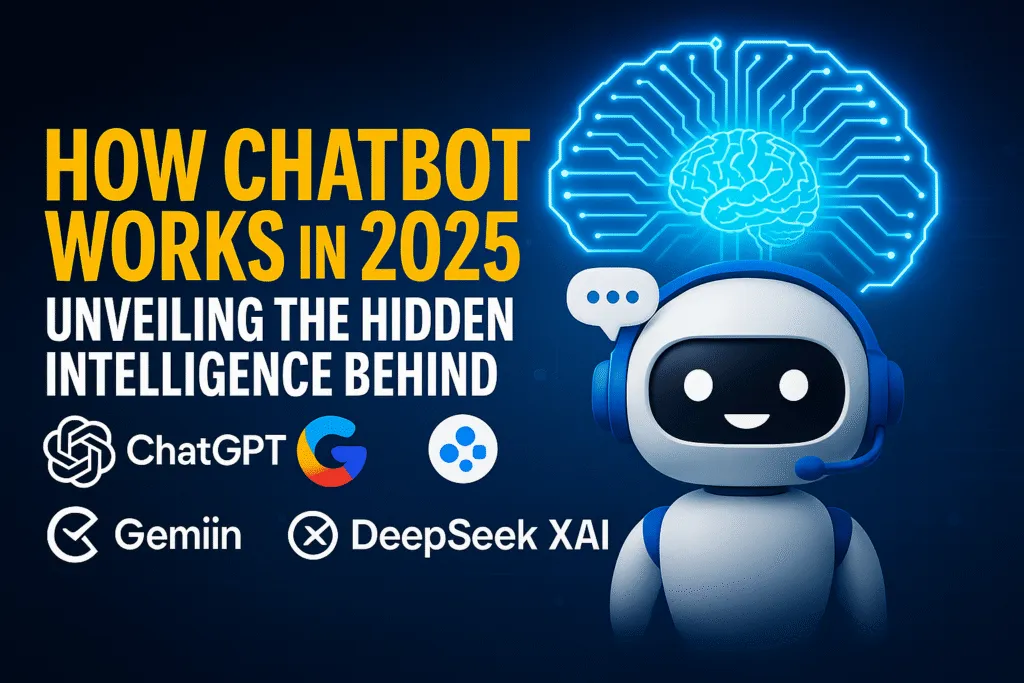Introduction
In 2025, the world of technology continues to amaze and alarm us, especially with the rise of deepfake content. As a tech blogger, I’ve closely followed how artificial intelligence has transformed content creation, but the pace at which deepfakes are evolving is genuinely startling. What started as a novelty—putting celebrity faces in movie scenes—has now grown into a powerful, and at times dangerous, tool.
Deepfakes technology uses AI and machine learning to create hyper-realistic videos, images, and audio clips that can mimic real people. What’s shocking is how indistinguishable these manipulated clips have become from genuine footage. From political speeches to fake interviews, deepfakes are blurring the line between truth and fiction like never before. The potential for misinformation is enormous, especially in an era where social media spreads content like wildfire.
Even tech giants are now investing heavily in deepfake detection tools, but staying ahead of this AI-powered threat is proving to be a challenge. It’s no longer about whether deepfakes will impact our lives—it’s about how prepared we are to handle them. Whether you’re a content creator, journalist, or everyday user, understanding how deepfakes work is more important than ever.
As we move forward in 2025, the conversation around deepfakes isn’t just technical—it’s ethical, legal, and deeply personal. This blog will explore what you need to know about deepfakes today and how to stay informed in an increasingly deceptive digital world.
The New Face of Deception
In today’s digital world, seeing is no longer believing. Deepfakes have become the new face of deception, blending advanced AI with realistic visuals to manipulate our perception of reality. What was once considered science fiction is now a daily concern, especially in the age of viral content and instant sharing.
Deepfakes are not just playful celebrity face swaps anymore. They’ve entered more dangerous territory—being used to create fake political statements, forged evidence, and misleading news. The line between real and fake is becoming increasingly thin, making it harder for the average viewer to tell the difference. This silent threat is shaping how we consume content, trust media, and even interact online.
One of the scariest aspects of deepfakes is how convincing they’ve become. Thanks to machine learning and neural networks, these manipulated videos and audio clips can mimic voices, facial expressions, and gestures with shocking accuracy. A fake video of a public figure can now spark outrage, influence elections, or ruin reputations before the truth ever comes out.
For tech-savvy users and everyday consumers alike, understanding how deepfakes work is crucial. We must develop a healthy sense of skepticism and rely on trusted sources before accepting digital content as truth. Tech companies are trying to combat this issue by developing detection tools, but the technology behind deepfakes is evolving just as fast.
As deepfakes become more accessible and realistic, they pose a serious challenge not just to security, but to the very idea of digital truth. In this new era, being informed and cautious isn’t optional—it’s necessary. Deepfakes are redefining deception in the 21st century, and the responsibility to spot them lies with all of us.
Weaponizing Doubt
Deepfakes have introduced a new kind of threat—one that doesn’t just fool us with fake content but makes us question what’s real altogether. This is the dangerous power of weaponizing doubt. In 2025, as deepfakes grow more realistic and harder to detect, their true impact goes beyond simple misinformation. They’re creating a world where doubt itself becomes a weapon.
Imagine a genuine video of a whistleblower or a political leader. In the era of deepfakes, it’s now easier for someone to dismiss it as fake, even if it’s completely real. This ability to cast doubt on the truth gives bad actors a powerful tool—not just to deceive, but to deny. When everything can be faked, anything can be denied. That’s the chilling effect of deepfakes in today’s digital landscape.
This new layer of digital deception is especially dangerous during elections, international conflicts, and major social movements. A single deepfake can trigger chaos, but even more frightening is how it erodes public trust. People begin to second-guess everything they see and hear online. That’s how deepfakes silently chip away at the foundation of truth.
As a tech blogger, I believe raising awareness about how deepfakes weaponize doubt is critical. It’s not just about creating fake videos—it’s about reshaping public perception and controlling narratives. This form of manipulation doesn’t require convincing everyone; it only needs to make people uncertain.
In the fight against deepfakes, knowledge is power. The more we understand how they work and what they’re capable of, the better prepared we are to resist their influence. In this age of digital manipulation, protecting the truth starts with recognizing how doubt itself is being used against us.
AI vs. AI
As deepfakes become increasingly sophisticated, the battle to detect and control them is no longer a human effort alone—it’s a war of AI vs. AI. In 2025, artificial intelligence is both the creator and the defender, as tech companies and researchers use advanced machine learning to fight fire with fire. The same technology that generates deepfakes is now being used to identify and stop them.
Deepfakes rely on powerful AI algorithms like GANs (Generative Adversarial Networks), which are trained to produce ultra-realistic images, videos, and voices. These systems learn from massive datasets and improve with every iteration, making detection more challenging by the day. But now, AI-powered detection tools are stepping up. They scan for inconsistencies in lighting, blinking patterns, voice modulations, and even pixel-level anomalies—details often invisible to the human eye.
This AI vs. AI approach is critical because manual detection can’t keep up with the speed and scale at which deepfakes are being produced. Social media platforms, cybersecurity firms, and even governments are investing in automated systems that can flag suspicious content in real time. Some AI tools are now capable of identifying deepfakes with over 90% accuracy—but it’s a constant game of catch-up.
The irony is striking: AI is both the problem and the solution. While one side continues to push the boundaries of what’s possible in synthetic media, the other is racing to develop smarter, faster defenses. This technological tug-of-war is shaping the future of online trust. Deepfakes rely on powerful AI algorithms like Generative Adversarial Networks (GANs), which are trained to produce ultra-realistic media.
For everyday users, the takeaway is clear. Deepfakes aren’t going away anytime soon, but AI-driven tools give us hope in preserving digital authenticity. As the AI vs. AI battle intensifies, staying informed and alert is our best defense in this evolving cyber battlefield.
Deepfake Porn: The Silent Epidemic
One of the most disturbing and underreported uses of deepfakes is their role in non-consensual explicit content—commonly referred to as deepfake porn. This silent epidemic is spreading rapidly across the internet, targeting celebrities, influencers, and increasingly, everyday people. Unlike political or comedic deepfakes that often get public attention, this darker side remains largely in the shadows, causing real psychological harm to its victims.
Using AI, malicious actors can map a person’s face onto explicit videos with shocking realism. These deepfakes don’t just manipulate visuals—they manipulate lives. Victims often find themselves humiliated, blackmailed, or socially isolated, with little legal protection or control over the spread of the content. The emotional and reputational damage caused by such deepfakes is long-lasting and, in many cases, irreversible.
What makes this trend even more dangerous is how accessible the technology has become. With open-source tools and user-friendly apps, creating deepfake porn no longer requires expert-level skills. All it takes is a few publicly available photos or videos to generate harmful content. As a result, deepfake porn has become a weapon of harassment and revenge, disproportionately affecting women and marginalized groups.
Despite growing awareness, laws in many countries still lag behind. Few have clear legal frameworks specifically addressing deepfake-related crimes, leaving victims with limited recourse. Tech platforms are struggling to keep up, often failing to detect and remove such content quickly enough.
As a tech blogger, I believe it’s crucial to highlight the human cost of this silent epidemic. Deepfakes aren’t just a technological curiosity—they’re a growing threat to privacy, safety, and dignity. Addressing deepfake porn requires stronger regulation, better detection tools, and a cultural shift toward respecting digital consent. Only then can we hope to curb the damage caused by this misuse of AI.
Social Media’s Collateral Damage
Social media was designed to connect us, but in the age of deepfakes, it has become a breeding ground for deception. Platforms that thrive on speed, virality, and engagement are now unintentionally amplifying one of the most dangerous technological threats of our time. Deepfakes are spreading faster than ever—not just because the technology is improving, but because social media makes it easy to share, believe, and react without question.
The collateral damage is enormous. Misinformation campaigns using deepfakes can go viral in minutes, influencing public opinion, damaging reputations, and even inciting violence. Unlike traditional fake news, deepfakes appeal to the eye and ear, making the lies feel real. And once something believable is out there, even a quick takedown can’t undo the damage—screenshots and downloads live on.
Social media algorithms are partly to blame. Designed to boost content that gets high engagement, they often prioritize sensational deepfakes over verified information. This creates a feedback loop where fake videos get more reach than real ones. Even when platforms act quickly, detection often lags behind, especially with the rapid improvement of deepfake quality.
What’s more concerning is the erosion of trust. People are starting to question everything they see, which is healthy to an extent—but when doubt becomes the default, even real content loses credibility. That’s how deepfakes are reshaping our online behavior, and social media is at the heart of it.
As deepfakes continue to evolve, social media must step up its defenses. That includes better AI detection tools, clearer labeling systems, and more accountability for content sharing. But users also have a role to play. In a world where seeing is no longer believing, digital literacy is our first line of defense against deepfake-driven misinformation.
Economic Fallout
The rise of deepfakes isn’t just a social or ethical concern—it’s quickly becoming an economic threat. As these AI-generated manipulations grow more convincing, they’re beginning to disrupt industries, shake investor confidence, and cost companies real money. In 2025, the economic fallout from deepfakes is no longer hypothetical. It’s happening right now, and it’s far-reaching.
Imagine a fake video of a CEO announcing bankruptcy or a major scandal. Within minutes, stock prices can plummet, markets react, and millions—sometimes billions—can be lost before the content is proven false. This is not just theory; we’ve already seen deepfake scams tricking employees into transferring funds or leaking sensitive information based on faked audio or video of their superiors.
Industries like finance, cybersecurity, and media are especially vulnerable. Deepfakes are being used in phishing attacks, financial fraud, and brand impersonation schemes. Businesses are now investing heavily in AI-powered detection tools and employee training just to keep up. Yet, for many small and mid-sized companies, the cost of prevention is already becoming a burden.
The insurance sector is also being impacted. With the rise in digital deception, companies are having to reconsider how they assess risk. Cyber insurance policies now need to account for damages caused by deepfake-related incidents—something that wasn’t even on the radar a few years ago.
This growing threat means businesses must evolve quickly. Combating the economic fallout of deepfakes requires more than just technology; it demands awareness, agility, and proactive strategies. For startups, corporations, and governments alike, protecting financial stability now includes defending against synthetic media.
As deepfakes become more accessible and realistic, their economic impact will only intensify. Ignoring the financial risks is no longer an option. In the AI era, even a single fake video can come with a very real price tag.
Legal Grey Zones
As deepfakes become more advanced and accessible, legal systems around the world are struggling to keep up. In 2025, we find ourselves in a maze of legal grey zones where the technology is moving faster than regulation. Deepfakes raise serious questions about privacy, consent, identity theft, defamation, and intellectual property—but the law hasn’t fully caught up.
One major challenge is that most legal frameworks weren’t designed with synthetic media in mind. In many countries, there are no specific laws that address deepfakes directly. Instead, victims must rely on outdated or unrelated laws—like cyberbullying, impersonation, or copyright claims—which often fall short when dealing with AI-generated content.
For example, if someone creates a deepfake using your face but doesn’t profit from it or break into your accounts, existing laws may not consider it a crime. Even when harm is clear, such as in cases of deepfake porn or political misinformation, the legal consequences for the creator are often minimal or entirely absent.
Cross-border issues make it worse. A deepfake made in one country can go viral globally within minutes, making enforcement difficult or even impossible. Jurisdiction, evidence collection, and cooperation between nations are major obstacles to meaningful legal action.
Some governments are beginning to draft deepfake-specific legislation, and a few tech platforms are taking steps to label or restrict such content. But without a unified global response, deepfakes continue to operate in legal shadows.
As a tech blogger, I believe it’s crucial to highlight this gap. The longer deepfakes live in legal grey zones, the more they can be used to manipulate, harass, or deceive without accountability. Clearer laws, stronger protections, and faster legal reform are essential to prevent abuse in this rapidly evolving digital landscape.
The Psychology of Believability
What makes deepfakes so powerful isn’t just the technology—it’s how our brains process what we see and hear. In 2025, as deepfakes become more lifelike, they’re tapping into deep-rooted psychological tendencies that make us believe what’s in front of us, even when it’s false. Understanding the psychology of believability is key to grasping why deepfakes are so effective—and so dangerous.
Human brains are wired to trust visual and auditory cues. For most of history, if we saw someone speak or heard their voice, we accepted it as truth. Deepfakes exploit this default trust. When a video looks authentic and sounds convincing, our brains naturally accept it—often before we’ve had time to question or analyze it. This immediate belief makes deepfakes particularly potent in spreading misinformation.
Another factor is confirmation bias. If a deepfake aligns with what someone already believes or wants to believe—about a politician, celebrity, or social issue—they’re even more likely to accept it as true and share it without verifying. This emotional connection strengthens the illusion of authenticity.
There’s also the illusion of truth effect—the tendency to believe information we’ve seen or heard repeatedly, regardless of its accuracy. When deepfakes are shared widely, they gain credibility just by existing in our feed over and over again.
The danger here is subtle but serious. Deepfakes don’t just trick the eyes—they hijack the brain’s trust systems. That’s why detection tools and media literacy are so important. We need to train ourselves to pause, question, and verify before we react.
In a world flooded with manipulated media, understanding the psychology behind our responses is the first step toward resilience. The more we know about how deepfakes exploit our minds, the better equipped we are to resist their influence.
Beyond Video
When most people hear the word deepfakes, they think of fake videos—realistic clips showing people saying or doing things they never actually did. But in 2025, the scope of deepfakes has expanded far beyond video. Today, audio, images, text, and even real-time digital interactions are being manipulated with the same AI technology, making deepfakes more pervasive and harder to detect than ever before.
Deepfake audio is one of the fastest-growing threats. AI can now clone a person’s voice with just a few minutes of sample data, creating fake phone calls, voicemails, and podcasts. Scammers have already used deepfake audio to impersonate CEOs and executives, tricking employees into transferring funds or sharing sensitive information.
Images, too, are no longer safe. AI-generated faces are often indistinguishable from real people, and tools like face-swapping apps or text-to-image models can produce fake photographs that look completely authentic. These images are being used in fake news, dating scams, fake identities, and even biometric fraud.
Text-based deepfakes are also emerging. AI can generate fake news articles, realistic chat conversations, and social media posts that imitate specific writing styles or personalities. Combine this with fake voices or images, and you have a multi-layered deception that can mislead even the most skeptical audiences.
The most advanced threat? Real-time deepfakes in video calls and livestreams. With improvements in processing power, it’s now possible to change faces or voices while speaking live. This opens up dangerous new possibilities for impersonation, fraud, and social engineering.
As deepfakes move beyond video, the lines between real and artificial blur even further. Awareness is our best defense. Whether it’s a suspicious phone call or a too-perfect profile picture, recognizing that deepfakes are no longer limited to video is the first step in staying safe in this AI-driven world.
A New Digital Literacy
In 2025, digital literacy is no longer just about knowing how to use a computer or navigate the internet. We’ve entered a new era—one where understanding deepfakes is essential to being a responsible and informed digital citizen. With AI-generated content becoming harder to distinguish from reality, a new kind of digital literacy is urgently needed.
Traditional media literacy taught us to question sources, check facts, and look for bias. But that’s no longer enough. Now, we must learn to spot visual and audio manipulation, understand how deepfakes are created, and recognize the psychological tricks they play on us. This shift is about more than protecting ourselves from being fooled—it’s about protecting our society from the spread of synthetic misinformation.
Deepfakes thrive in environments where people share content without thinking critically. Whether it’s a fake celebrity scandal, a fabricated political statement, or a voice note impersonating someone you trust, the impact can be immediate and damaging. Teaching people how to verify digital content, analyze inconsistencies, and slow down before reacting is more important than ever.
This new digital literacy also involves understanding the tools available. There are now AI-based apps that can help detect deepfakes, browser plugins that alert you to suspicious content, and verification platforms that work to confirm the authenticity of media. Knowing how to use these tools should be part of everyday digital habits.
As a tech blogger, I believe that fostering this new digital literacy must begin early—in schools, workplaces, and online communities. It’s a shared responsibility. The more people understand how deepfakes work, the harder it becomes for bad actors to use them effectively.
In a world where seeing is no longer believing, the ability to think critically and verify truth is no longer optional—it’s a core skill for surviving the age of deepfakes.
Conclusion
Deepfakes have rapidly evolved from experimental tech curiosities into powerful tools capable of reshaping how we perceive truth. In 2025, their reach has extended into nearly every aspect of our lives—from politics and media to finance, social relationships, and personal safety. While the technology itself isn’t inherently evil, its misuse reveals a serious threat to trust in the digital age.
Throughout this blog, we’ve explored how deepfakes manipulate not just images and audio, but also human psychology, public discourse, and even economic systems. We’ve seen how social media amplifies their spread, how laws are still catching up, and how AI is now battling AI to detect deception. Most importantly, we’ve uncovered the real-world consequences that go beyond screens—damaged reputations, financial fraud, social unrest, and emotional trauma.
But it’s not all doom and gloom. With awareness, education, and the development of smarter detection tools, we can begin to push back. A new era of digital literacy is emerging, one that goes beyond clicking and scrolling, encouraging users to pause, question, and verify.
As a tech blogger, I believe the deepfake era demands more than passive consumption—it calls for active engagement, critical thinking, and a shared responsibility to protect digital truth. Deepfakes aren’t just changing media—they’re changing us. And how we respond today will shape the integrity of information for years to come.
The challenge is real, but so is our ability to adapt. The future of truth in the digital world depends on what we do next.
Also Read: AI in 2030: Shocking Predictions You Need to Know Now.
FAQs About Deepfakes in 2025
1. What are deepfakes, and how are they created?
Deepfakes are media—usually videos, audio, or images—that are digitally altered using artificial intelligence to mimic real people. They’re typically created using machine learning models like GANs (Generative Adversarial Networks) which can learn and reproduce human features, voices, and movements with high accuracy.
2. Why are deepfakes considered dangerous?
Deepfakes can spread false information, damage reputations, manipulate public opinion, and even commit fraud. Their realism makes it difficult for people to distinguish between what’s real and what’s fake, eroding trust in media and communication.
3. Can deepfakes be detected?
Yes, but it’s challenging. Advanced AI tools and detection software can analyze patterns in pixels, lighting, blinking, voice inconsistencies, and more to identify deepfakes. However, as the technology improves, so do the fakes, making detection an ongoing battle.
4. Are deepfakes illegal?
It depends on the country and the context. Many places still don’t have clear laws specifically targeting deepfakes. However, certain uses—like deepfake porn, identity theft, or fraud—can fall under other legal categories. Legal frameworks are evolving, but gaps remain.
5. How can I protect myself from deepfakes?
Stay informed, avoid sharing unverified content, and use tools that help detect synthetic media. If you’re a public figure or creator, monitor your digital presence and use watermarking or authentication tools when possible.
6. Are there any positive uses for deepfakes?
Yes, deepfakes can be used for ethical purposes like film production, voice synthesis for people with disabilities, and creating realistic virtual assistants. The technology isn’t inherently bad—its impact depends on how it’s used.
7. Will deepfakes get even more realistic in the future?
Absolutely. With advances in AI, deepfakes will continue to improve in quality and accessibility. This makes awareness, regulation, and detection technology more critical than ever.
